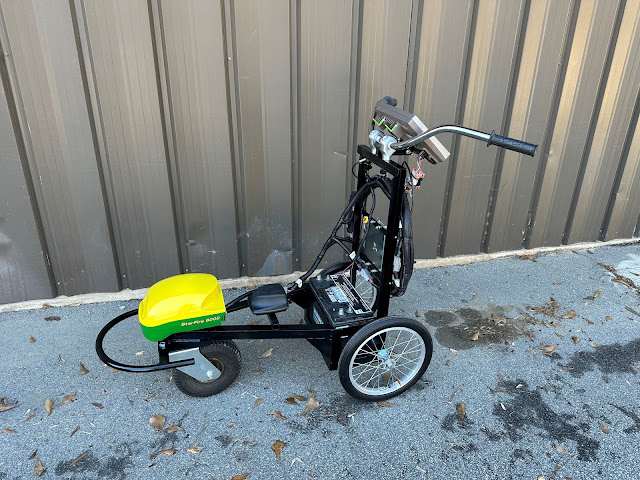We were early adopters of John Deere's GPS sprayer technology and now have four units in the fleet. We have experienced operational cost savings of over 10% overall, and in some cases approaching 15%, since moving away from manual spraying. There are many areas of the property which are challenging to map due to proximity to hazards, etc. In those areas we manually spray with spray hawks or hand held nozzles, which is difficult to get consistent results and is labor intensive.
I was speaking with Stewart Laver, Greenville Turf and Tractor's "GPS Guru", and he told me about someone who had put together a GPS cart somewhere in Florida. Stewart supplied me with a parts list for the wiring harness and such, and I started looking around the shop for parts...
I found a nice large caster wheel which was originally on a ball picker, and then purchased the 16" spoked wheels from Northern. Once I had the basic parts I could draw up a basic design.
Once I had the basics laid out, I started by building the battery box around one of our Group 31 deep cycle batteries and then tied the caster wheel to it and started to think about a handlebar. I figured a wide bar would be best for good leverage, and found an old used cruiser bar at a local cycle shop. After building the upright to mount the handlebar on, it was pretty straightforward to get all the components mounted - then I had to figure out the best way to package the wiring harness.
To set up the cart for use, I harvest the Starfire Receiver, Display, and Controller from one of our sprayers. The wiring harness and cellular antenna stay with the cart when not in use. Total setup time is around 20 minutes.
I added the large U-bolt up front to use for tying off in the trailer, and to protect the Starfire from impacts.
The GPS cart has allowed us to map areas which wouldn't be practical, or safe, to map otherwise.
Total cost for the project was around $2,500.






